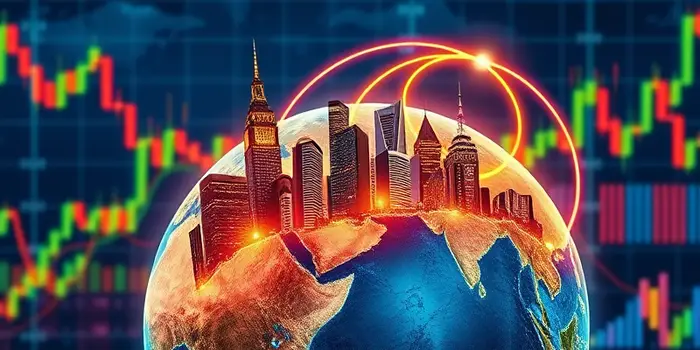
As the first quarter of 2025 closed, global investors displayed a marked preference for established economies, channeling capital overwhelmingly into developed markets. Despite an overall 3.1% decline in net assets in euro terms, the interplay of currency dynamics and risk-off sentiment produced a resilient story for wealthy nations. This article examines the data, dissects the drivers and offers practical guidance for navigating a world where allocations remain skewed toward familiar shores.
In Q1 2025, global fund net assets fell 3.1% in euro terms to EUR 73.9 trillion. Yet, thanks to a weaker dollar relative to the euro, assets measured in U.S. dollars inched up by 0.8%. Sales of long-term funds slowed but stayed positive across most regions, even amid lingering volatility and geopolitical friction.
Investor sentiment remains cautious, a pattern reflected in steady, if decelerating, demand for diversified equity products. The modest uptick in dollar terms highlights how currency stabilization and FX effects can reshape headline figures, even during downward market cycles.
The current landscape sharply distinguishes developed markets from their emerging counterparts. While flows into North America and Europe held firm, allocations to emerging economies barely registered on global balance sheets. Median emerging market equity weightings linger around 6–8%,
This contrast underscores a disconnect: despite faster GDP growth in emerging economies, investors favor safety and liquidity in familiar markets. The result is a persistent gap between theoretical benchmarks and actual portfolio design.
Several forces converge to direct capital toward developed markets. Heightened geopolitical risk compels investors toward safe havens, while uncertainty over central bank policies spurs caution. At the same time, the U.S. leads in digital asset fund flows, reinforcing its position as a preferred investment hub.
These drivers intertwine, creating a feedback loop: as capital flows into developed markets, their liquidity and depth improve, further entrenching their appeal. Emerging markets, by contrast, must overcome volatility and structural concerns to earn a larger share.
Although emerging economies are projected by the IMF to grow at nearly 3.9% annually—more than double the 1.7% pace in advanced economies—investors remain underexposed. The median global equity fund allocates just 6.4% to emerging markets, far below GDP- and market cap-based targets.
This gap is driven by long-standing concerns over governance, liquidity constraints and market volatility. Despite compelling long-term returns and diversification benefits, many portfolios continue to be persistently underweight the space, reflecting a cautious approach that prioritizes stability over potential alpha.
In Q1 2025, sustainable funds experienced record outflows of $8.6 billion, reversing the prior quarter’s $18.1 billion inflows. U.S. sustainable products alone saw $6.1 billion in redemptions, marking a tenth consecutive quarter of outflows. Europe recorded its first sustainable fund exit since 2018, underscoring shifting investor priorities.
By contrast, digital assets continued to attract capital at pace. In the first half of 2025, inflows reached $17.8 billion, mirroring 2024’s total. The U.S. accounted for nearly all new digital fund investments, with digital asset fund inflows originating in the U.S. totaling $2.65 billion in a single week late June. Other regions, including Hong Kong and Brazil, saw outflows.
The dominance of developed markets in fund flows has broad implications. Portfolios heavily weighted toward mature economies may sacrifice growth opportunities, while underexposure to faster-expanding regions could reduce diversification effectiveness. Emerging markets, with favorable demographics and expanding middle classes, present long-term potential that remains largely untapped.
Looking ahead, central bank decisions will play a pivotal role. Any hint of tightening in the U.S. or ECB rate adjustments could shift sentiment again. Meanwhile, geopolitical flashpoints—from trade disputes to regional conflicts—will continue to test risk appetites. Investors must weigh the security of established markets against the growth prospects and diversification benefits of emerging economies.
To navigate this environment, investors can adopt targeted approaches that blend stability with growth potential. Building a diversified global equity sleeve requires deliberate exposure adjustments, disciplined risk management and ongoing portfolio review.
By combining these methods, investors tap both resilient developed markets and high-growth emerging economies. Such a framework marries principles of international portfolio theory versus practice with real-world constraints, enabling practical tips for investors and fostering intelligent portfolio construction strategies that stand the test of global uncertainty.
References













